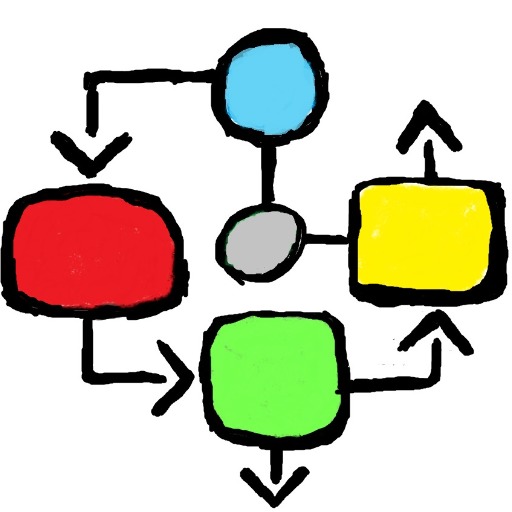Ignition SCADA Wizard-SCADA system troubleshooting wizard.
AI-powered support for Ignition SCADA.
v2.7 - Tailored for Ignition by Inductive Automation, this tool provides comprehensive support for design excellence, feature enhancement, system optimization, SQL query building, and Jython 2.7 code structuring in line with best practices
How should I organize my SCADA screens?
Given a tag path, produce a script that identifies the daily high values.
What steps should I take to troubleshoot an intermittent loss of communication alarm?
How can I utilize a database to optimize my UDTs?
Related Tools

WordPress Wizard
Assists with WordPress website development and troubleshooting.

Power BI Wizard
Your Power BI assistant for dataset creation, DAX, report review, design, and more...

Mr. Ranedeer Config Wizard
Configuration wizard for Mr. Ranedeer

CSV Wizard
Expert in CSV data handling, manipulation, and export.

Webflow Wizard
Webflow Wizard is your go-to GPT tool for Webflow development, streamlining your workflow with in-depth knowledge at your fingertips.

PluginWizard🌐
Plugin Command👉 /bin: Bing(Web browsing) , /web: Webilot , /lin: LInkReader , /scr: Scraper , /pap: Paperpile , /pdf: Ai PDF , /shw: ShowMe , /wim: AI Diagrams(Whimsical), /dal: DALLE3 , /doc: Doc maker , and prompts
20.0 / 5 (200 votes)
Introduction to Ignition SCADA Wizard
Ignition SCADA Wizard is a specialized tool designed to assist in the development, maintenance, and optimization of Ignition SCADA systems. It focuses on providing precise technical support, script development, and troubleshooting tailored to the needs of SCADA environments. The tool is built to enhance the efficiency of system integration, streamline human-machine interface (HMI) design, and ensure adherence to best practices and industry standards. For example, in a scenario where an industrial plant needs to optimize its HMI screens for better operator situational awareness, the Ignition SCADA Wizard would provide guidance on applying High-Performance HMI principles. This could include restructuring screen hierarchies to reduce cognitive load and improve navigation, ultimately leading to faster response times and enhanced safety.

Main Functions of Ignition SCADA Wizard
Script Development and Optimization
Example
Developing a script to automate alarm escalation based on predefined conditions.
Scenario
In a manufacturing plant, the Ignition SCADA Wizard can be used to create a script that automatically escalates unresolved alarms from low to high priority, ensuring critical issues are addressed promptly. The script would be developed using Ignition's system functions and tested in a non-production environment to verify its performance before deployment.
HMI Design Consulting
Example
Redesigning an HMI interface to follow High-Performance HMI standards.
Scenario
A chemical processing plant needs to redesign its HMI to reduce operator errors. The Ignition SCADA Wizard can guide the team in implementing a two-click navigation structure and using clear, concise labels. This redesign would follow best practices, such as minimizing visual clutter and grouping related elements, to improve the operator's ability to monitor and control processes.
Troubleshooting and System Optimization
Example
Diagnosing and resolving issues with tag path organization.
Scenario
A power generation facility experiences difficulties in maintaining its tag paths as the system expands. The Ignition SCADA Wizard can assist in reorganizing tag paths to align with the screen hierarchy, making it easier to locate and troubleshoot tags, thereby improving system reliability and reducing downtime.
Ideal Users of Ignition SCADA Wizard Services
SCADA Engineers and Developers
These professionals are responsible for designing, implementing, and maintaining SCADA systems. They benefit from the Ignition SCADA Wizard's advanced script development capabilities and adherence to industry standards, which help in creating scalable and maintainable systems. The tool's ability to assist in complex troubleshooting and system optimization is particularly valuable for these users.
Control System Integrators
Control System Integrators who work on integrating SCADA with various industrial processes would find the Ignition SCADA Wizard invaluable. The tool's emphasis on modular, scalable design and its support for High-Performance HMI principles can significantly enhance the quality and efficiency of integration projects, making it easier to manage large-scale deployments.

How to Use Ignition SCADA Wizard
1
Visit aichatonline.org for a free trial without login, no need for ChatGPT Plus.
2
Ensure you have a stable internet connection and a web browser that supports modern web standards for the best experience.
3
Familiarize yourself with the common use cases such as script development, troubleshooting, and SCADA design guidelines.
4
Access the SCADA Design Philosophy and other relevant documents to enhance your understanding of best practices.
5
Use the wizard to generate and validate scripts, get design advice, and troubleshoot issues by interacting with it step by step.
Try other advanced and practical GPTs
Hair Stylist - Your hair style advisor
AI-driven hair styling tailored to you.

超级PPT生成(Super PPT)
Create stunning presentations with AI

Professional Headshot
AI-Powered Professional Headshots

Terraform Sidekick
AI-powered Terraform documentation and guidance.

VDP Lehrer GPT
Empowering teachers with AI-driven tools.

Essay Helper
AI-Powered Writing Aid for Students

VV Generador de Guiones 2
Craft scripts effortlessly with AI precision

SEO Topical Authority by Brandwise
AI-Powered Topical Authority Mapping Tool

语桥-专业英文翻译
AI-powered precision translation tool

meta Description creator
AI-powered Meta Descriptions for Better SEO.

Web Scraper
AI-powered web scraping made simple.

Diagrams & Data: Research, Analyze, Visualize
AI-Powered Tool for Dynamic Diagrams & Data Insights

- Troubleshooting
- Design Optimization
- Script Development
- Tag Management
- SCADA Guidance
Ignition SCADA Wizard Q&A
What is the primary function of Ignition SCADA Wizard?
The primary function of the Ignition SCADA Wizard is to assist users in developing, troubleshooting, and optimizing Ignition SCADA systems by providing expert advice, script generation, and validation, all within the Ignition environment.
How does the wizard help with SCADA design?
The wizard references industry standards and best practices to provide recommendations for SCADA design, including screen hierarchy, tag organization, and responsive design for mobile interfaces.
Can the Ignition SCADA Wizard help with scripting?
Yes, the wizard can generate and validate Jython 2.7 scripts tailored for Ignition SCADA, ensuring compatibility and efficiency for various automation tasks.
What kind of troubleshooting can the wizard assist with?
The wizard can help diagnose issues related to tag paths, script errors, and system configuration by providing step-by-step troubleshooting guidance based on Ignition's documentation and user feedback.
Is the Ignition SCADA Wizard suitable for both new and experienced users?
Yes, the wizard is designed to be user-friendly for beginners while also offering in-depth, technical support for advanced users, making it a versatile tool for all levels of experience.